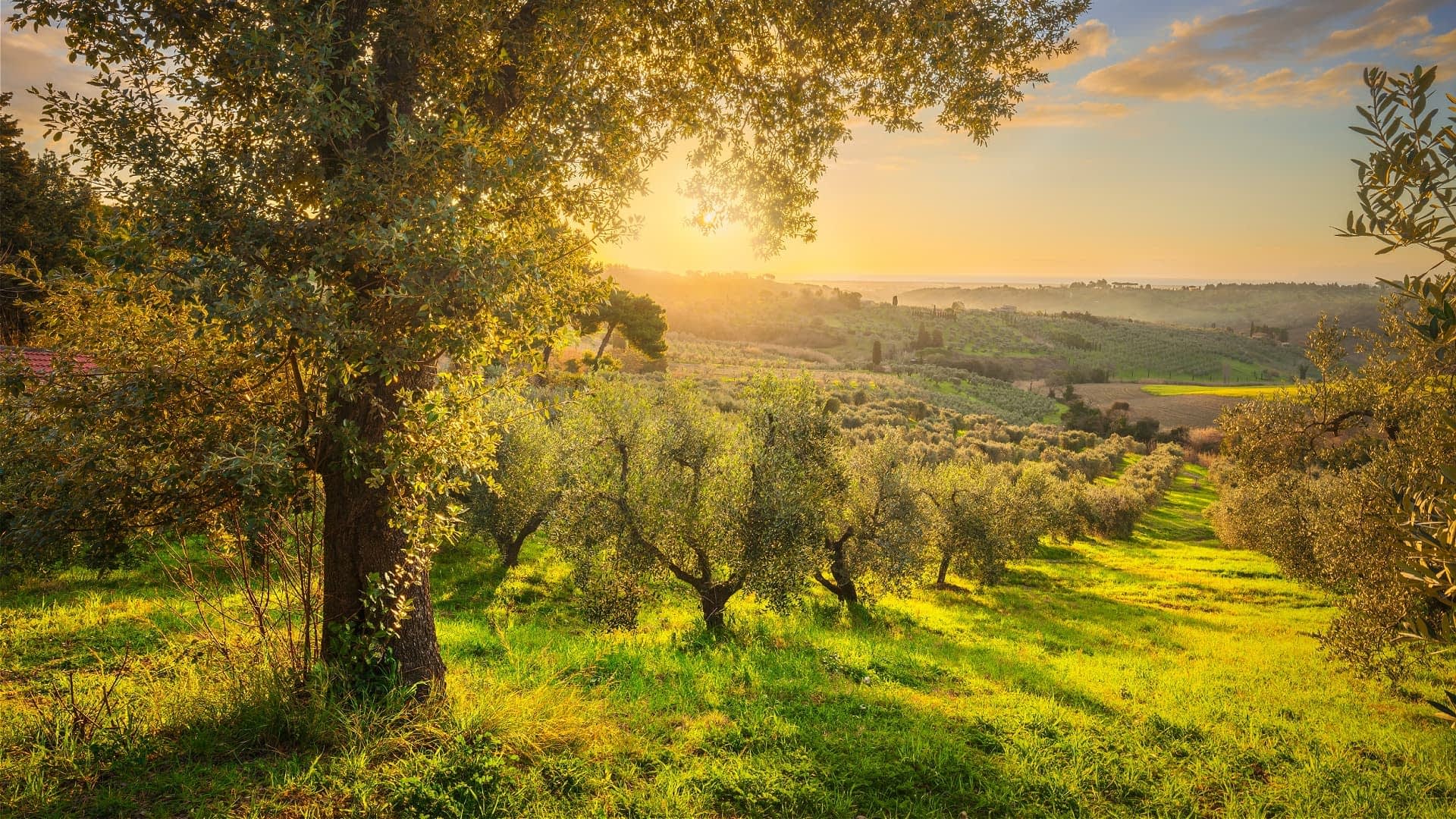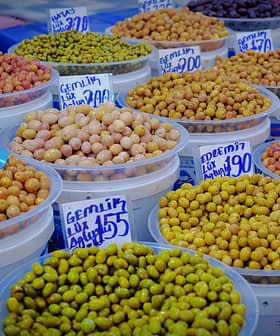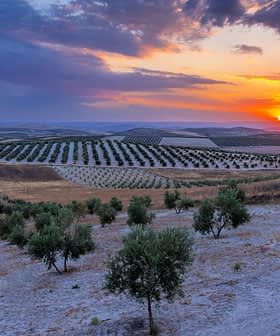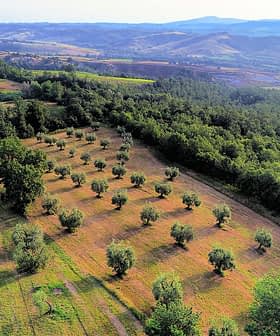 8.8K reads
8.8K readsWorld
Demand for Organic Olive Oil Growing Globally

The global organic olive oil market is growing significantly, with a projected rise to $2.2 billion by 2031. This increase is driven by factors such as consumer awareness of healthy food, public policies promoting organic farming, and expanding international demand. Countries like Tunisia, Italy, and Spain are seeing increases in organic olive oil production and exportation, with the United States also playing a significant role as a major importer of organic olive oil.
Organic olive oil is gaining traction in international markets. A growing volume of olive oil trade now comes from organic production as organic olive farms are also expanding significantly.
Allied Market Research shows that the global organic olive oil market was valued at $933 million in 2021. According to Polaris Market Research, the olive oil market was valued at $14 billion that year.
Consumers who are well-informed of the advantages of organic farming and the quality of organic produce are also more willing to pay the higher price of organic olive oil.
In 2031, the organic olive oil market is expected to rise to $2.2 billion, with an annual growth of close to 9 percent.
A large share of organic olive oil is exported in bulk in a business-to-business (B2B) environment. By 2031, B2B organic olive oil trade is expected to exceed $803 million. In 2021, it sat at $357 million.
See Also:Organic Farms Produce Less, but Are More Cost Effective, Study FindsExperts cite rising consumer awareness of healthy food as one of the drivers of increasing sales for organic food products.
“Consumers who are well-informed of the advantages of organic farming and the quality of organic produce are also more willing to pay the higher price of organic olive oil,” Nikos Renieris, owner at El Renieris, an olive oil producer and bottler in Crete, Greece, told Olive Oil Times.
Public policies also come into play. One example is the European Union’s strategy to expand organic farming, to convert 25 percent of all farmland in the bloc to organic practices by 2030.
Producing countries, such as Tunisia, whose exports constitute a large portion of its olive production, are reporting substantial increases in organic olive oil trade as well.
Hamed Daly Hassen, chief executive of Tunisia’s National Olive Oil Office, told Olive Oil Times that organic olive oil accounted for 44 percent of all Tunisian production in 2021, exceeding 100,000 tons. In 2012, organic olive oil was less than 10 percent of all production.
The rising share of organic olive oil production is due to growing international demand, mainly from developed countries.
“For sure, the more economically advanced markets are those that are driving sales of organic olive oil,” said Renieris, adding that organic olive oil sales are rising annually on Crete.
Still, according to exporters and importers, organic olive oil sales growth is only partially related to the demand trend.
“The German extra virgin olive oil market is strong, and the share of organic olive oil is growing as well,” Massimo Boraso, the chief executive of the Italian e‑commerce olive oil platform, OlivYou, told Olive Oil Times. “The German consumer is even more proactive in looking for organic olive oil than the Italian one.”
While rising prices and persistent inflation have resulted in a predicted decline in global olive oil consumption, the German olive oil market has shown significant growth.
According to the International Olive Council, olive oil consumption in the country rose from 60,500 tons in the 2012/13 crop year to an expected 88,000 tons in 2022/23.
“Considering that we only sell high-end extra virgin olive oils, organic olive oil sales are growing throughout a consumer base that is highly interested in finding the right olive oil but also in trying out new olive oils,” Boraso said.
In developed economies such as the United Kingdom, the success of organic olive oil goes hand-in-hand with the popularity of extra virgin olive oil among consumers.
“We have seen consumers’ awareness changing with our high-end product retail partners in the U.K.,” Yacine Amor, importer and CEO at Artisan Olive Oil, told Olive Oil Times. “The Covid-19 pandemic played a big role, boosting home cooking for quite a long time, and health-conscious consumers started paying way more attention to olive oil and good quality olive oils.”
While organic olive oil found new passionate customers during the pandemic, current economic conditions have changed significantly, altering U.K.’s market landscape.
“As inflation bites, families have changed their priorities. They need to cope with a challenging situation,” Amor said. “High-quality olive oil and organic olive oil are now taking a hit.”
He added that extra bureaucratic hurdles imposed by Brexit, the U.K.’s decision to leave the E.U., had also affected the availability of organic olive oil.
“If you enter a supermarket now, you can see how the choices of olive oil available to consumers have halved since two years ago,” Amor said.
“And the same happens to organic olive oil and organic products in general, shunned by families trying to save money and retailers who promote basket-protection strategies for their customers,” he added.
Along with the U.K. and Germany, Bosaro said he had noticed a growing interest in organic olive oil in other parts of northern Europe, including Sweden and Estonia.
Across the Atlantic, the United States has become one of the world’s largest olive oil consumers and importers over the past two decades.
International Olive Council data show that U.S. olive oil imports rose from 193,000 tons in 2002/03 to an anticipated 360,000 tons in 2022/23, approximately 36 percent of global olive oil imports. The largest quantities of extra virgin olive oils are imported from Italy, Spain and Tunisia.
In 2013, the U.S. Department of Agriculture estimated that organic olive oil represented one-tenth of the value of foreign olive oil sales in the U.S.
USDA data show that between 2013 and 2021, the value of U.S. organic imports increased five-fold, rising from $500 million to $2.7 billion. The USDA also expects these figures to continue rising in the future.
Given the pivotal role played by the U.S. as a global olive oil importer, the rising demand for organic olive oil will likely have ripple effects throughout the sector.
The interest of importers and consumers in organic olive oil also affects producing countries.
In Italy, 12 percent of the country’s organic farmland is home to olive groves. According to the Institute of Services for the Agricultural and Food Market (Ismea), organic olives grow on approximately 243,000 hectares in the country.
In its latest report, Ismea said the amount of land dedicated to organic olive growing doubled from 2010 to 2019. Since then, though, the growth has slowed to 1.5 percent per year.
The latest E.U. regulations promoting organic farming will result in a resurgence in organic olive growing.
In Spain, the world’s largest olive oil-producing country by a wide margin, the number of organic olive groves continues to rise across the country.
According to the Ministry of Agriculture, Fisheries and Food, land dedicated to organic olive groves increased by 16 percent in 2021. Now organic olive groves now cover 256,510 hectares in Spain, an area larger than Luxemburg.
The largest increase in organic olive growing came from Andalusia, responsible for most of Spain’s olive oil production. Organic olive grove coverage rose by nearly one-third in the region from 88,691 hectares in 2020 to 117,380 hectares in 2021.









